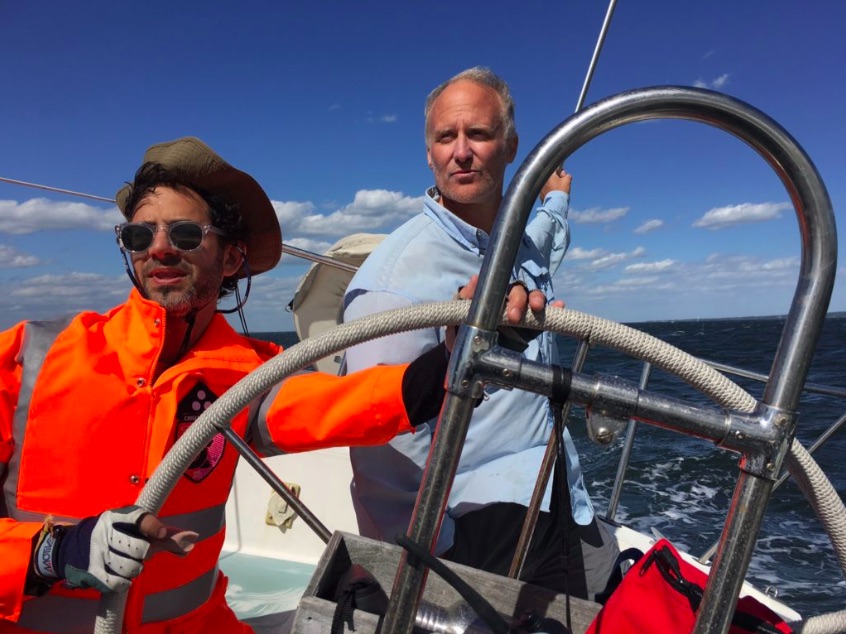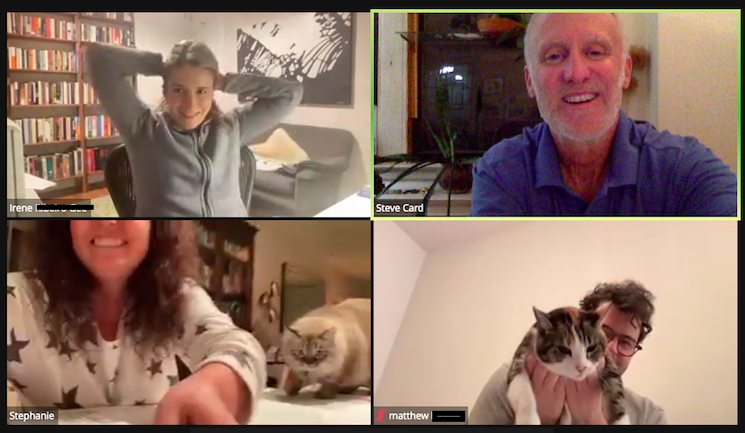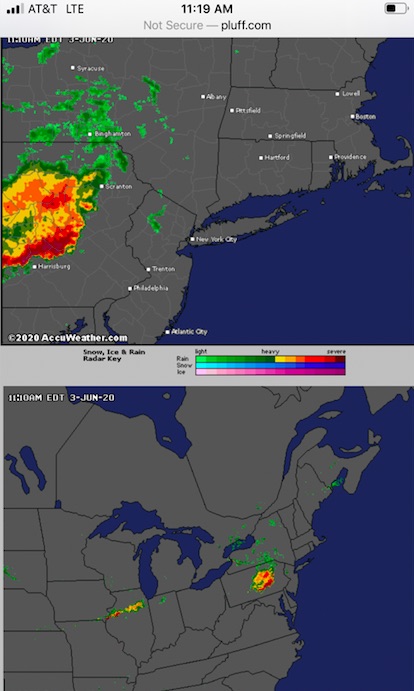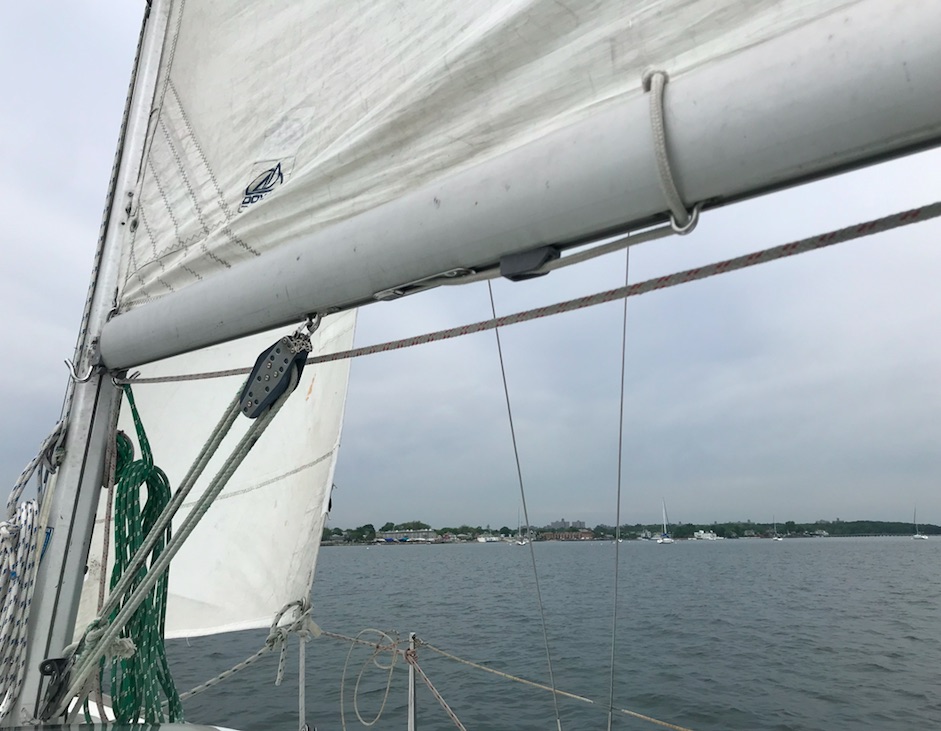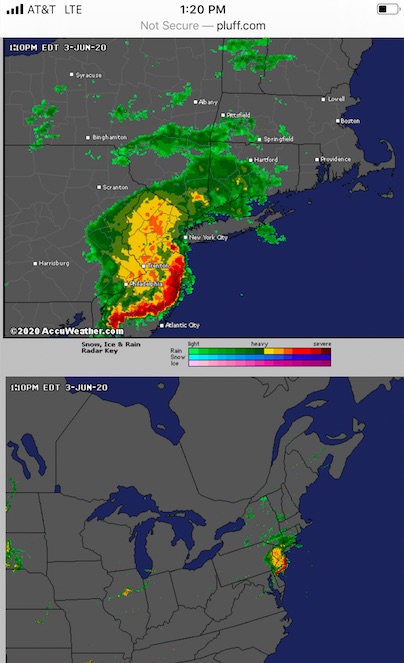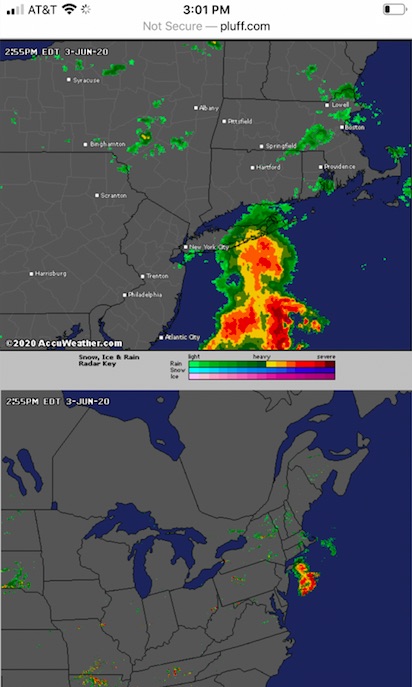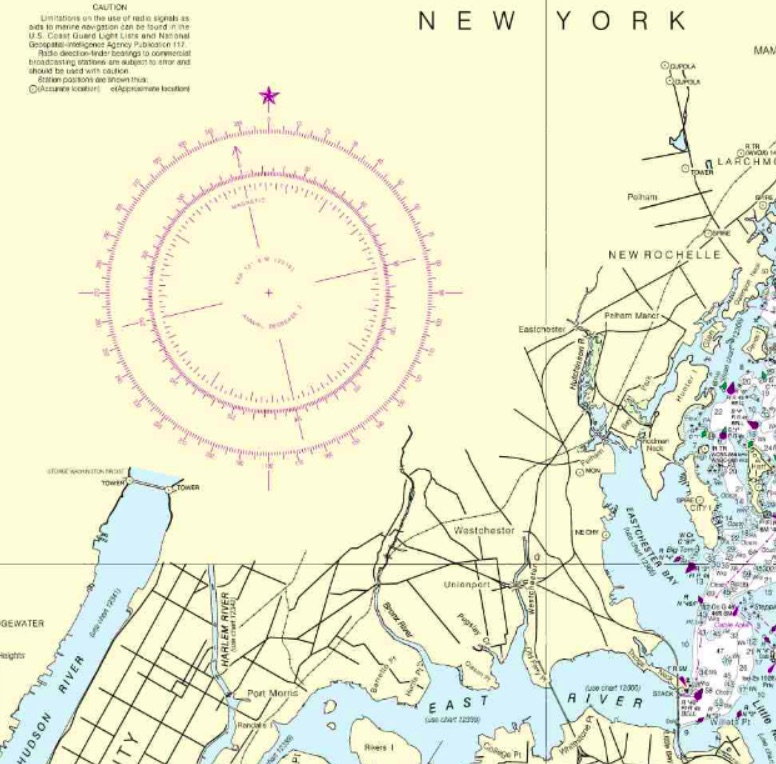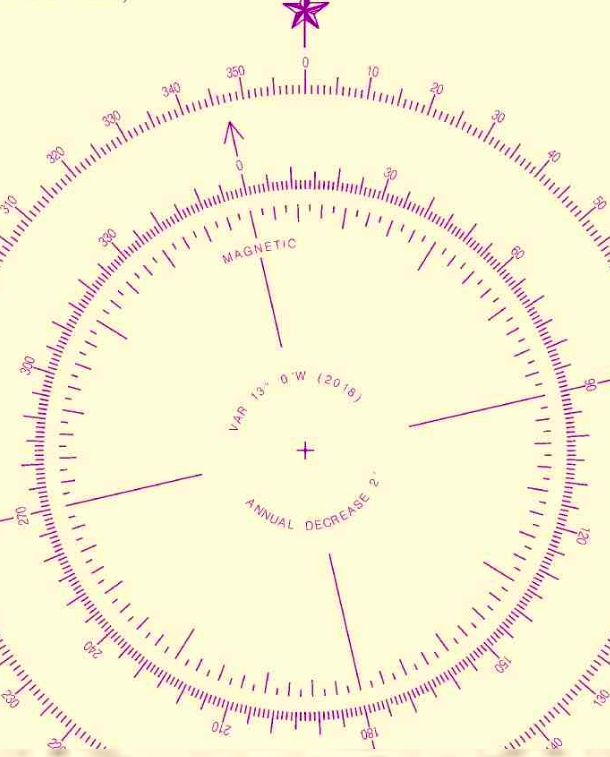When learning how to navigate or sail a boat, currents and tides sometimes have something to say. Which causes the other – current, or tide?
We ask this in each schedule of Start NavigatingSM, our ASA 105 Coastal Navigation course. I have a strong opinion on this. Apparently, it agreed with NOAA and NOS. They had a “Did you know?..” posted on one page, and it said what I thought already: one causes the other, despite the conventional wisdom being otherwise.
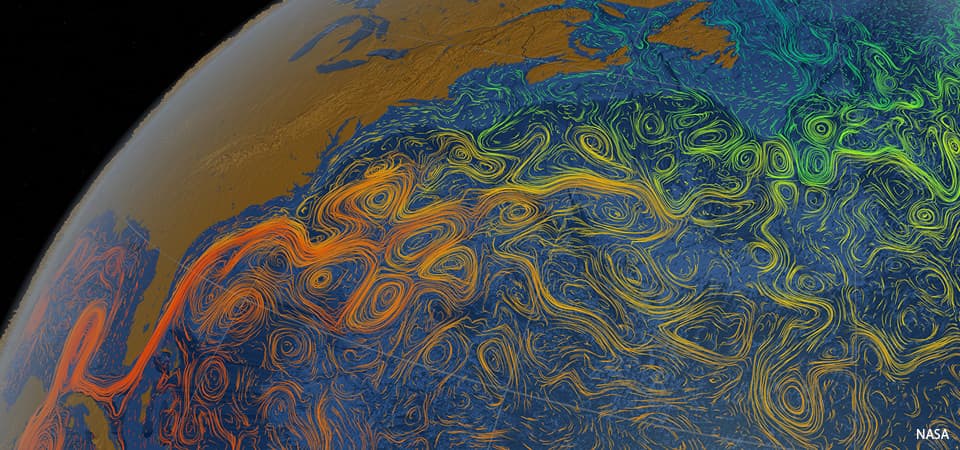
Of course, when this topic arose again recently, due to ASA sending an e-blast concurring with the conventional wisdom, I was ready to sink my chops into it. Here’s what they said…
Tides are the vertical movement of water caused by the gravitational fields of the sun and the moon acting on bodies of water. Tidal Currents are the result of water moving between high and low tides.
Zeke Quezada, “TIPS FROM THE TEXT ‘TIDES & CURRENTS,'” on ASA’s site and in their January 27 e-blast.
So… celestial gravity raises earth’s waters, forming currents that fill in the gap? Nahhh…. Hard no, IMHO. Where was that NOAA page? I went looking for it.
Two weeks later: still looking. They seem to have deleted that page, and / or edited it and others. And, they have mixed statements about how this all interrelates. That got me thinking again about the topic, and further researching it. Most explanations I came across seemed somewhere between lame and oversimplified. But, most of them shared a common assumption of facts that were supported by an astrophysicist who I’ll cite below. He sought to debunk the common explanations of those facts. As did I.
I wrote him but haven’t heard back yet. I also reached out to a good friend who’s a PHD candidate in climate science at Columbia. She supported my explanation, and also noted that it’s a tricky topic to teach and that her students usually have trouble with it.
Let’s try to decipher this. What are currents and tides generally? What’s the difference between them? That part is simple.
CURRENT is any horizontal motion of earth’s waters across the face of it (back and forth; in and out).
TIDE is any vertical motion of earth’s waters (up and down).
What causes this to happen? Let’s limit this to interrelated current and tide, and leave out anything about wind driven currents or those caused the the rotation of earth (both of which are separate phenomena from tide and tidal current). Back to cause and effect:
The gravity of the moon mostly, with a little less than half of the forces caused by the sun.
Yup. “It is known.”
But, that’s both the beginning and the end of what people pretty much agree on. So let’s flesh out what the author here – me – thinks. Methinks. (Yes, grammatically incorrect x 2. So sue.)
What causes the “motion of the ocean?”
The gravitational pull of the moon, mostly, with less than half the total force being from the more powerful but far more distant sun. Their combined gravity pulls the earth’s waters around, causing cycles every day. We have two high tides and two low tides each day as the waters bunch up in response to celestial gravity. Because the tides are based on the moon much more than the sun, it takes a little over one “day” for the completion of all the cycles – around 50 minutes or so. (The moon rises later each night, in case you hadn’t noticed. That’s due to the moon’s orbit around earth.)
As the water chases the gravity, it flows horizontally across the earth’s surface, which is what we call current. As water leaves one area, it drops vertically, and as it bunches up in another, it rises. Therefore, current flow causes the rise and fall we call tide.
The Motion of the Ocean, excerpt from “Navigation for Numbskulls,” or How to get from A to B Without Hitting C. Captain Stephen Glenn Card (I authored the text in 2002, updating occasionally, and it’s the companion textbook we use for the ASA 105 Coastal Navigation course, Start Navigating. )
When people say that tide causes current, it implies that the moon stretches or lifts earth’s waters vertically, and pulls in water from other areas in the form of current. Neither the moon nor the sun has the gravitational force to actually lift earth’s waters.
Analogy, for those who like them: imagine the force required to push a boat through the water at a dock with one hand on a calm, still day. It’s pretty easy. Then, imagine lifting that boat out of the water and up into the air. That requires a multi-ton hoist. The concept is the same for cosmic gravity moving earth’s waters. It’s easy to pull them across earth, and impossible to lift them up and away from it.
But, don’t take my word for it… here are two videos and a pulled paragraph that sort of resonate with what I’m saying…
And, here’s a quote pulled from NOAA’s site (National Oceanic and Atmospheric Administration)…
TIDES
If you live near the coast or have ever visited the beach, you are probably aware of tides. But did you know that tides are really big waves that move through the ocean in response to the forces exerted by the Moon and the Sun? Tides start in the ocean and move towards the coast, where they appear as the regular rise and fall of the sea surface. How much the water level changes over the day varies depending on where you are and what day it is.
NOAA, in their abstract / synopsis of tides and currents. https://oceanservice.noaa.gov/navigation/tidesandcurrents/
Here’s another… also NOAA: Physical Oceanographer Greg Dusek, a senior scientist at NOAA’s Tides and Currents Office…
…And that affects water levels too, because you’re pushing either water away from shore so you have a little bit of a decrease in water level, or you’re pushing water towards shore and you have an increase in water level.
…When the Gulf Stream slows down, you can see increases of water level along the Southeast coast by several inches to maybe a foot. In some cases, it happens pretty regularly. So in North and South Carolina, you get a regular increase in water level in the fall because the Gulf Stream tends to be a little bit slower during those time periods.
Greg Dusek, NOAA Ocean Podcast Episode 15, “Tides and Currents: the Motion of the Ocean” (not to be confused with this author’s identical section title from his book, as I came up with the phrase on my own. So there.) Dusek’s topic here was mostly ocean currents like the Gulf Stream as caused and influenced by earth’s rotational force.
I repeat: “tides start in the ocean and move towards the coast” (translation: current)
…where they appear as the regular rise and fall of the sea surface.” (translation: tide.)
So, on a simply descriptive basis, with or without the terms current &/or tide, NOAA’s explanations agree with mine. And, everyone agrees that current is horizontal and tide vertical.
Add all this up…
Tyson: earth revolves through the tidal bulge caused by the moon (horizontal motions of earths surface and/or waters)
Perez-Giz: the moon does not lift or stretch the earth’s waters.
NOAA: ocean waters travel toward the coasts, where they rise and fall.
Card’s Conclusion: current causes tide.
Hopefully, this clears it up more than clouding it. What do you think? Weigh in!


